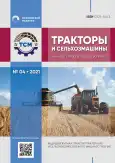Intensification of the recovery of hydraulic equipment parts by iron in the electrolyte flow
- Authors: Kisel' Y.E.1, Simokhin S.P.1, Murachev S.A.1
-
Affiliations:
- Bryansk State Engineering and Technological University
- Issue: Vol 88, No 4 (2021)
- Pages: 63-70
- Section: Articles
- URL: https://journals.rcsi.science/0321-4443/article/view/87331
- DOI: https://doi.org/10.31992/0321-4443-2021-4-63-70
- ID: 87331
Cite item
Full Text
Abstract
The technology of bath-free ironing of parts in an electrolyte flow with simultaneous hydromechanical activation of the growing surface is proposed. Its advantages over the traditional type of coating are introduced. The structure, some physicomechanical and operational properties of iron coatings were studied depending on the electrolysis regimes and the composition of electrolytes. The possibility of high-speed electrodeposition of iron with a wide range of physical and mechanical properties is shown. There were shown the electrolysis modes, which make it possible to obtain high-quality strong-adhered pure-iron coatings with a wear resistance several times higher than hardened alloy steels and a precipitation growth rate tens of times higher than with traditional ironing. A typical technological process of parts ironing was developed. It was tested on the example of restoration of hydraulic valve spools of agricultural machinery. The design of an installation and an electrochemical cell for ironing the valve hydraulic distributors, providing optimal hydrodynamic conditions when applying coatings to worn surfaces, was proposed. Recommendations for the post-electrolysis treatment of restored parts by iron are given. Bench and field tests of hydraulic valves with remanufactured valves were carried out. They confirmed the results of laboratory studies, and showed that no malfunctions were identified during the operation period. Technical and economic calculations have shown the high efficiency of the proposed technology in comparison with traditional ironing. The introduction of the technology in production will reduce the production area and the time spent on restoring parts by increasing the productivity of the iron process and reducing the number of operations, reducing the cost of materials for preparing electrolytes by reducing the operation of anodic treatment and washing, and increasing the reliability of the technology by improving its structural scheme.
Full Text
##article.viewOnOriginalSite##About the authors
YU. E. Kisel'
Bryansk State Engineering and Technological University
Email: Simonin77@mail.ru
Dsc in Engineering
Russian Federation, BryanskS. P. Simokhin
Bryansk State Engineering and Technological University
Author for correspondence.
Email: simonin77@mail.ru
Russian Federation, Bryansk
S. A. Murachev
Bryansk State Engineering and Technological University
Email: Simonin77@mail.ru
Russian Federation, Bryansk
References
- Yudin V.M., Vikharev M.N., Slinko D.B. Restoration of bore holes of body parts with galvanized coatings. Tekhnicheskiy servis mashin. 2019. No 4(137), pp. 152−159 (in Russ.).
- Spitsyn I.A., Yudin V.M., Zakharov YU.A., Golubev I.G. Restoration of cast iron parts of agricultural machinery by galvanizing with mechanical activation of the cathode surface. Tekhnika i oborudovaniye dlya sela. 2020. No 9 (279), pp. 38−42 (in Russ.).
- Kurchatkin V.V., Tatatorkin V.M., Batishchev A.N., Golubev I.G. Tekhnicheskoye obsluzhivaniye i remont mashin v sel’skom khozyaystve [Maintenance and repair of machinery in agriculture]. Academia Publ., 2013. 464 p.
- Tekhnologiya remonta mashin. Pod red. YE.A. Puchina. Moscow: KoloSS Publ., 2007. 488 p.
- Gur’yanov G.V. Elektroosazhdeniye iznosostoykikh kompozitsiy [Electrodeposition of wear-resistant compositions]. Kishinev: Shtiintsa Publ., 1986. 240 p.
- Kolemayev V.A., Staroverov O.V., Turundayevskiy V.B. Teoriya veroyatnostey i matematicheskaya statistika [Theory of probability and mathematical statistics]. Moscow: Vysshaya shkola Publ., 1991. 400 p.
- Yudin M.I. Planirovaniye eksperimenta i obrabotka yego rezul’tatov [Experiment planning and processing of its results]. Krasnodar: KGAU Publ., 2004. 239 p.
- Kisel’ YU.E. Povysheniye dolgovechnosti detaley sel’skokhozyaystvennoy tekhniki elektrotermicheskoy obra-botkoy kompozitsionnykh elektrokhimicheskikh pokrytiy: avtoref. dis. doktora tekhnicheskikh nauk [Increasing the durability of agricultural machinery parts by electrothermal treatment of composite electrochemical coatings: Dissertation for Degree of DSc in Engineering]. Saratov, 2014. 37 p.
- Gur’yanov G.V., Kisel’ YU.E. Iznosostoykiye elektrokhimicheskiye splavy i kompozity na osnove zheleza [Wear-resistant electrochemical iron-based alloys and composites]. Bryansk: Izd-vo BGITA Publ., 2015. 98 p.
- Progressivn·yye rezhushchiye instrumenty i rezhimy rezaniya metallov [Progressive cutting tools and cutting modes of metals]: spravochnik / V.I. Barannikov [i dr.]. Moscow: Mashinostroyeniye Publ., 1990. 373 p.
Supplementary files














